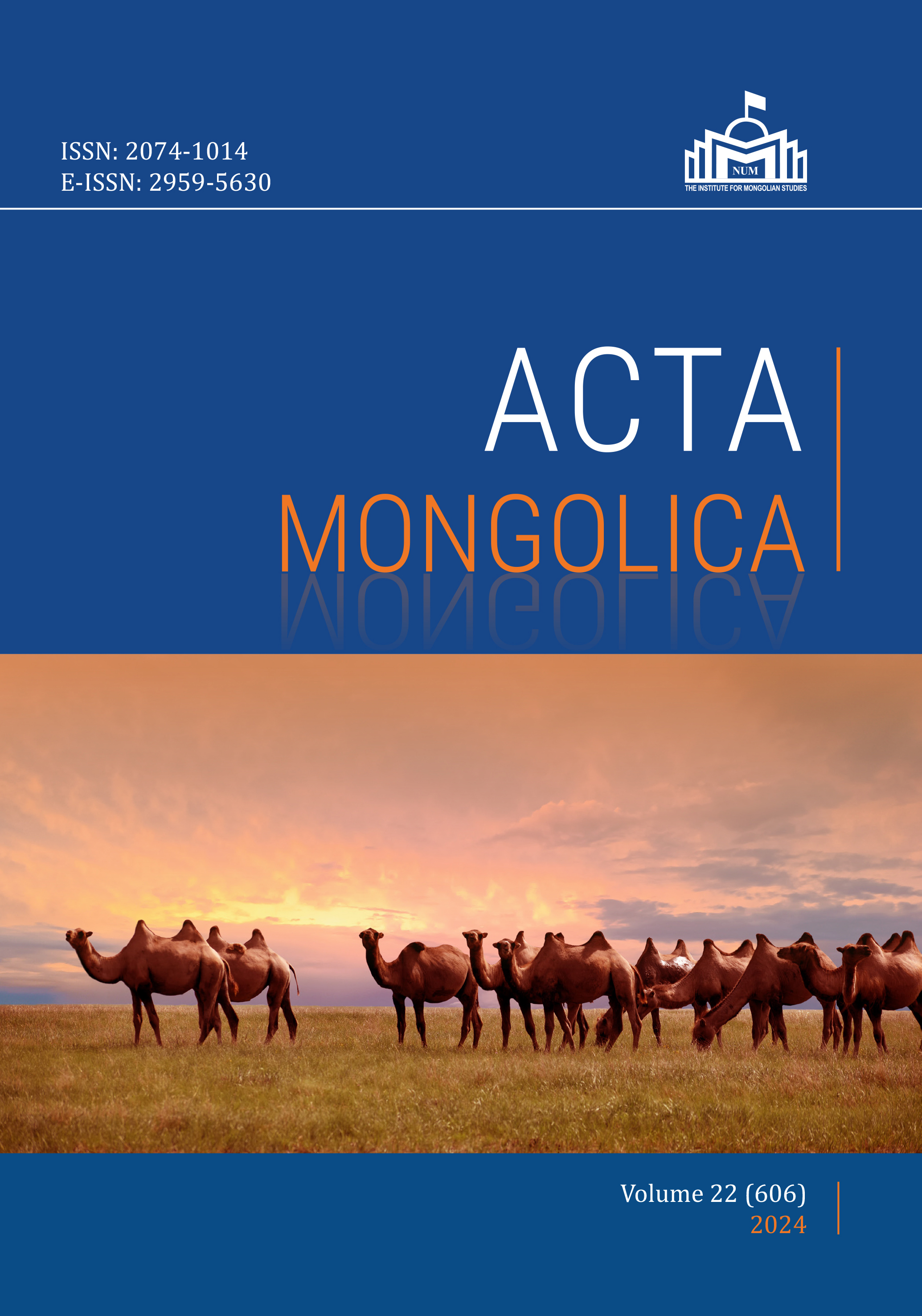Two types of D-licensing approach to Nominative/Genitive Conversion in Japanese With some comparative notes on Hitiku and Osaka dialects and Inner Mongolian
Main Article Content
Abstract
This study discusses two analyses within the D-licensing approach to Nominative/Genitive Conversion (NGC), a phenomenon observed in Altaic languages such as Japanese, Turkish, and Mongolian. Japanese generative grammarians have endeavored to elucidate the case-alternation system, identifying two approaches: D-licensing and C-licensing approaches. The former assumes that the genitive case on the subject DP is licensed by the D-head of the hostmain noun, while the latter assumes that it is licensed by the C-head of the prenominal clause. the a -as Both approaches exhibit advantages and disadvantages; we focus on however, this study focuses on the former approach, study omitting discussion of the latter. A crucial aspect of the D-licensing approach revolves around the size of the prenominal clause, TP. Nevertheless, the traditional D-licensing approach analytical framework encounters challenges when dealing with NGC involved in nominative object constructions. Recently, a new analysis under the D-licensing approach has been proposed, in which the licensor is D, but the size of the prenominal clause is CP. We contend that this novel analysis raises some concerns as a result of the adopted assumptions. Therefore, we propose substituting by them with Chomsky’s labeling algorithm and Saito’s anti-labeling devices method. Additionally, we discuss dialectical variations in NGC, exploring Hitiku and Osaka Japanese, as well as the same drawing parallels with Mongolian.
Article Details

This work is licensed under a Creative Commons Attribution-ShareAlike 4.0 International License.
References
Akaso, N., & Haraguchi, T. (2011). On the Categorial Status of Japanese Relative Clauses. English Linguistics, 28, 91-106.
Boa, L. (2015). A Comparative Study of Particles in Japanese and Mongolian. Doctoral dissertation. Osaka University.
Bošcović, Ž. (1997). The Syntax of Nonfinite Complementation: An Economy Approach. MIT Press.
Chomsky N. (2013). Problems of Projection. Lingua, 130, 33-49.
Chomsky, N. (2015). Problems with Projection: Extension. In E. E. Domenico et al. (Eds.) Structures, Strategies, and Beyond: Studies in Honor of Adriana Belletti (pp. 3-16). John Benjamins, Amsterdam, Philadelphia: John Benjamins.
Hale, K. (2002). On the Dagur object relative: Some comparative notes. Journal of East Asian Linguistics, 11, 109-22.
Hatakeyama, Y., Honda, K., & Tanaka,, K. (, 2008). Nihongo-ni ‘cyookyori’no reigaiteki kakufuyo-wa aru-no-ka? (Do the Japanese have long-distance exceptional case making?). Gengo Kenkyu, 134, 141-54.
Inoue, K. (1976). Henkei Bumpo to Nihongo (Transformational Grammar and Japanese). Taishukan.
Kageyama T. (2009). Gengo-no koozooseiyaku to jyojyutukinoo (the structural constraints and prediction functions in Language). Gengo Kenkyu, 136, 1-34.
Kishimoto, H. (2013). Notes on Correlative Coordination in Japanese. In Y. Miyamoto et al. (Eds). Deep
Insights, Broad Perspectives (pp. 192-217). Kaitakusha.
Kishimoto. H. (2017). Remarks on the Nominative-Genitive Conversion in Japanese. Nanzan Linguistics, 12, 1-27.
Kishimoto. H. (2022). Complex DPs and Genitive Subjects in Japan. Nanzan Linguistics, 17, 67-94.
Kornflict, J. (1984). Case marking, agreement, and empty categories in Turkish. Doctoral dissertation. Harvard University.
Kornflict, J. (2003). Subject case in Turkish nominalized clauses. Syntactic structures and morphological
information, Morton de Gruyter.
Maki, H., Bao, L. & Hasebe, M. (2015) Essays on Mongolian Syntax. Kaitakusha.
Mihara, K., & Hiraiwa, K. (2007). Sin Nihongo no Toogo Koozoo (Syntactic structure in Japanese ()
New Edition)). Syohakusya.
Miyagawa, S. (2012). Case, argument Structure, and Word Order., New York Routledge, New York.
Miyagawa, S., Nishioka N., & Zeijlstra, Het al.. (2016). Negative-sensitive items and the discourse-configurational nature Japanese. Glossa 1, article 33. https://doi.org/10.5334/gjgl.6
Miyagawa, S. (2017). Agreement Beyond Phi. MIT Press.
Nambu, S. (2012) Japanese genitive subject: a comparison with Uyghur. Online Proceedings of Glow Workshop for Young Scholars, 217-231.
Nishioka, N. (2018) On the positions of nominative subject in Japanese: Evidence from Kumamoto Dialect. MIT Working Papers in Linguistics 87, 165-77.
Nishioka, N. (2022). Nihongo-no v*P syugo to labeling (v*P subject and labeling in Japanese). In E.
Shima, et al. (Eds). Aspects of Language: An Interface between Present and Future (pp. 66-81). Kaitakusha.
Nomura, T. (1993) Joodai no ‘no’ to ‘ga’ ni tuite (On no and ga in old Japanese). Kokugo Kokubun, 62 (2), 1-17; 62(3), 30-49.
,lledOchi, M. (2017). Ga/No Conversion. In M. Shibatani et al. (Eds.). Handbook of Japanese Syntax. Mouton de Gruyter.
Ochi, M. (2020). Feature Transfer, Left Periphery, and Case Conversion. English Linguistics, 36, 263-94.
Saito, M et al. (2016). (A) Case for Labeling: Labeling in Languages without φ-feature Agreement. The Linguistics Review, 33, 129-75.
Ura, H. (2008). Long-distance Case Assignment in Japanese and Its Dialectual Variation. Gengo Kenkyu, 131, 1-43.

